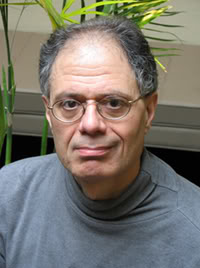The Public Domain: Enclosing the Commons of the Mind by James Boyle.
Press, 315 pages, $28.50.
Viral Spiral: How the Commoners Built a
Bollier. The New Press, 344 pages, $26.95.
By George Scialabba
Modern agriculture began around four hundred years ago. Traditionally the
History is written by the victors, so the progress caused by the enclosure movement is much better remembered nowadays than the misery. The lesson usually drawn from this episode is that private ownership makes for economic efficiency. At any rate, this is the lesson drawn by the pharmaceutical, biotechnology, software, and entertainment industries and successfully peddled by them (with a little help from campaign contributions) to Congress. In the last several decades, Congress has drastically extended the term and broadened the scope of both patents and copyrights, on the premise that only monopoly control of the product will motivate companies to invest the large sums required for research and development. So computer programs, gene sequences, chemical compounds, musical tunes, and databases, or even tiny parts of all these things, are increasingly no longer available to other artists, scientists and programmers without payment of a stiff licensing fee.
Some of the abuses resulting from this restrictive approach to intellectual property law have become notorious: Microsoft's effort to make every computer in the world run on Windows, for example; or the pharmaceutical industry's effort to stop developing countries from manufacturing cheap substitutes for expensive AIDS drugs. But there are myriad other examples, the cumulative effect of which is to enrich investors but seriously hamper the spread of ideas and information.
A cadre of public-spirited law professors has formulated a powerful critique of this "second enclosure movement," a critique that has achieved considerable resonance among musicians, programmers, scientists, and other intellectual workers. The Ralph Nader of this movement is Harvard law professor Lawrence Lessig. Another leading light is Duke professor James Boyle, whose new book, The Public Domain, is a superb introduction to the subject.
Underlying all property law is the question: How is wealth created? Obviously, every innovation has an individual component and a social component: inspiration plus tradition. Every original creation, Boyle observes, is "built from the resources of the public domain - language, culture, genre, scientific community, or what have you." Artists and inventors must eat, so they must have enough control over their creations to reap some financial reward. But unlimited control could make their work unavailable to future artists and inventors, diminishing everyone's welfare.
The Founders recognized the need for balance, and until recently American copyright and patent protection was sensibly modest. But a combination of industry pressure and ideological antipathy to the very idea of a public domain has upset the balance. Patents have been granted for a non-leaking peanut butter and jelly sandwich. Copyrights have been granted for two musical notes in succession. Taking off from a masterly analysis of Ray Charles's "I Got a Woman," Boyle demonstrates that hardly any 20th-century American popular culture could have come into being under today's copyright laws. He also shows that Internet is a lucky fluke, which barely escaped being turned into a one-way, access-controlled, pay-per-view medium like cable TV.
What to do? Along with Lessig and others, Boyle has pioneered the Creative Commons license. This new form of copyright allows the author of a work to reserve fewer rights than usual - or none at all - over its subsequent use but keeps others from taking it out of the public domain or "commons." Though it was incorporated only seven years ago, tens of millions of books, articles, songs, photos, videos, and software upgrades now bear a Creative Commons license. The story of
The Bolshevik leader Leon Trotsky warned the Western bourgeoisie that "you may not be interested in the Revolution, but the Revolution is interested in you." Likewise, you may not be interested in intellectual property law, but intellectual property law is interested in you, or at any rate in your children. Unless a determined public prevents free-market ideologues from fencing off our cultural and scientific commons and turning it into private property, available only for profit, our society will eventually be poorer, dumber, and less free.
[END]

Leave a comment